

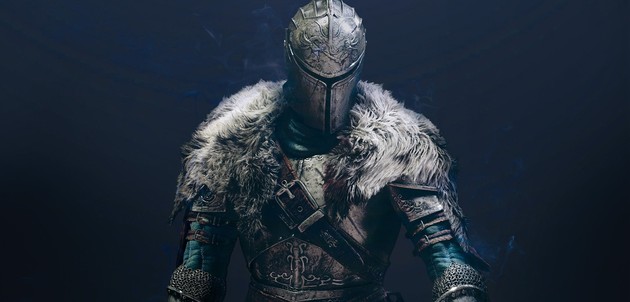
Republished on Tuesday, 31st March 2015: We're bringing this guide back out of the archives to celebrate the release of Dark Souls II: Scholar of the First Sin on the PlayStation 4. The original text pertaining to the PlayStation 3 release follows.
Originally published on Friday, 14th March 2014: Few video game experiences are as unforgiving and obtuse as From Software's Souls series. A franchise which can chart its lineage back to the equally tricky King's Field titles, Demon's Souls, Dark Souls and the recently-released sequel Dark Souls II are games that make very few concessions to the player; in this era of hand-holding tutorials, 'Super Guides', and instant restarts from nearby checkpoints, these games are unfriendly, unfeeling and unrelenting — yet playing them is one of the most rewarding experiences that you'll find in the realm of interactive entertainment.
While seasoned fans of the Souls series have been steadily hyping themselves up for the latest instalment, uneducated newcomers will no doubt have been reading descriptions not totally dissimilar to the opening paragraph of this feature and concluding that the franchise is too much like hard work to be even remotely enjoyable. If you're one of those people, then allow us to offer some advice, guidance, and direction — all of which should not only make Dark Souls II look a little more inviting, but will hopefully also build your confidence prior to stepping into the grim fantasy world of Drangleic.
One of the first things that you'll do in Dark Souls II is create your character using the game's initially imposing creation system. Editing your avatar's physical appearance is one thing, but picking a class is less permanent — just because you choose to begin the adventure as a burly knight or keen sorcerer doesn't mean that you're stuck in that role for the next 50 or more hours. As you level up you are able to manually assign points to various stats, so you can quite easily boost your magic user's strength so that they can brandish a heavy weapon, or augment your knight's magical prowess to permit them to master spellcasting.
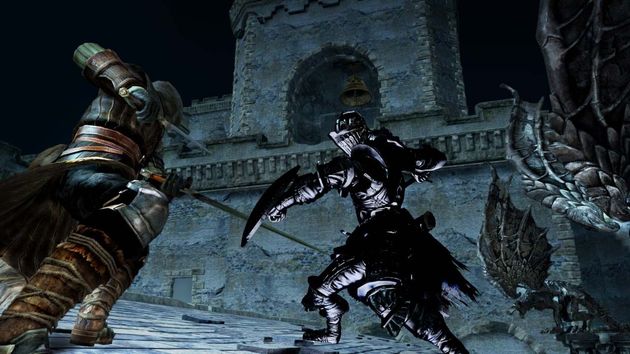
Your starting class is still important, though; if you want to begin your quest with the ability to get up close and personal with enemies then you'll want to select a class which comes equipped with a decent melee weapon. Arguably an easier route in for rookies is starting as a spellcaster, as this allows you to keep monsters at arm's length. Regardless of which strategy you choose, always keep in mind that it's never set in stone — you can totally transform your character during the course of the game.
As was the case in Dark Souls, bonfires are an integral part of the game — in fact, in this sequel they are even more important. Not only do they allow you to fully restore your health and access your item storage box, but you can also fast-travel between them, cutting down on the amount of time that you spend running from location to location (and consequently cutting down the risk of being killing en route). They also serve as checkpoints — when you die, you are sent back to the last bonfire that you rested at.
The most notable bonfire in the entire game — and arguably the one that you'll be returning to the most — is the one in the village of Majula, which serves as the game's central hub. Here, you'll find the Emerald Herald, who will grant you your Estus Flask (a vital item which restores vitality) and give you the chance to spend your accrued souls to level up your character.
Every enemy slain in the game gives you souls, which serve as the game's currency. Souls can be used to purchase items from the various vendors in Drangleic and used to repair items with the blacksmith Lenigrast. They are also used to level up your character, with each successive level rise putting the cost of the next up slightly.
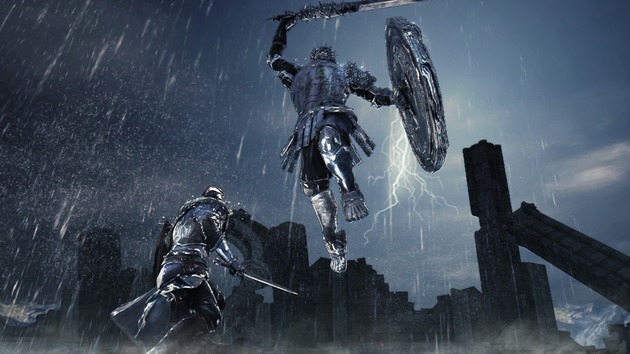
You'll also come across souls which manifest themselves as items in the game, usually with titles such as 'Soul of a Proud Knight'. Using these items adds additional souls to your store; the grander the title of the soul, the more your total rises.
The souls you gain remain in place until you spend them on something or you fall in battle, so it's unwise to let them build up too much — the risk is always that you'll come a cropper and lose what potentially equates to hours and hours of progress.
Deciding how to spend your souls on level upgrades is one of the most important things that you'll do in Dark Souls II. Because the cost of advancing any one of your stats rises each time you level one up, you need to decide if you're going to improve every one equally, or instead focus on certain areas to suit your play style.
For example, those who favour melee combat will want to level up areas such as Strength, Dexterity, and Vitality, three stats which are important when it comes to fighting and wielding heavy weapons. However, spellcasters will do better to concentrate on augmenting their power by throwing souls at stats such as Attunement, Intelligence, and Faith. One stat that all players will want to bolster is Endurance, which determines the size of your stamina gauge. Since stamina is consumed by almost all in-game actions, having a large amount means that you can execute more attacks, rolls, and spells before having to retreat and allow it to replenish.
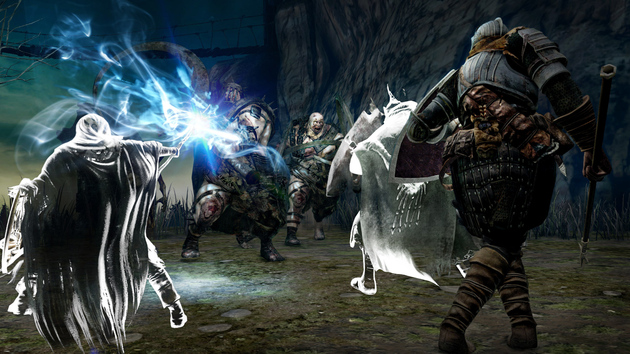
It's worth stating this again — every time you level up a stat, the cost of levelling another increases, so be careful with how you spend your souls. If you find that you've levelled yourself into a corner and wish to redistribute your spent souls, you can use the rare Soul Vessel item. Simply take this item to the witches that you meet at the start of the game, in the Things Betwixt area.
Levelling up your character allows you to boost your stats, which in turn means that you can hit harder, move faster, and take more punishment. However, the equipment you have is equally important; a robust set of armour can be the difference between life and death, and there are numerous status-impacting items which prove indispensable, especially early on in the game. One example is the Chloranthy Ring, which increases the rate at which your stamina gauge replenishes, meaning that you can dive in and out of combat at a more impressive pace. The equally useful Ring of Restoration slowly replenishes your health over time.
Some weapons cannot be used effectively unless you have stats at a certain level — heavy, powerful weapons require lots of strength, while lighter, more graceful ones (such as rapiers) demand dexterity. You'll be able to equip these even if you don't meet the requirements, but it's not worth the hassle, as they're effectively useless.
One final thing to remember with your item loadout is that your character is capable of carrying a certain amount of equipment. The closer that you are to your maximum weight load, the slower your character will move. Try and balance out protection with pace; all of the armour in the world isn't worth much if you're too sluggish to avoid incoming blows.
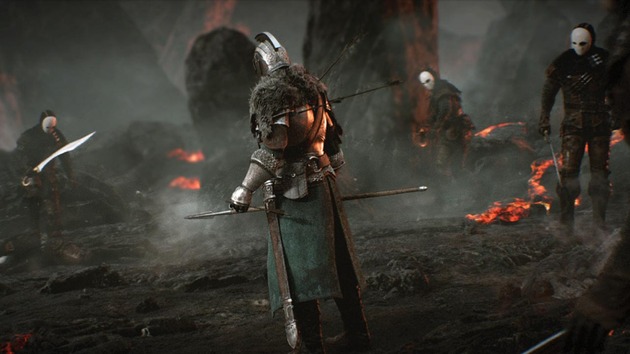
When you fight in confined spaces you'll notice that weapon swings often ping off walls; not only does this break your combination of attacks and leave you open to the enemy, it also dulls and damages the weapon in question. In the equipped item box in the bottom-left corner of the screen you'll see a red bar beneath your current weapon — this is its durability. Should this drop to nothing, your weapon will break and become useless. You can fix it up on the fly by using the Repair Powder item, or restore an unbroken item's health by stopping at a bonfire. Trashed gear isn't a total loss; take them to the blacksmith in Majula and he will make it as good as new — for a certain number of souls, of course.
Your Estus Flask is one of the most important items in the entire game. It will restore health with a quick swig, and can be upgraded using shards to grant more uses. Visiting a bonfire will restock the Estus, so — unlike other restorative items which can be found throughout the game — it is effectively an unlimited supply.
Using the Estus Flask — and any other restorative item for that matter — incurs a penalty; you have to wait for the animation to play out, during which you are immobile and vulnerable. Time your swigs well, and don't reach for it in the middle of a fight — you'll be a sitting duck.
In Dark Souls II, online play manifests itself in two ways: summonings and invasions. The former is when you request the assistance of other players, who appear in your world as allies. The latter is less pleasant, as it involves fellow humans gatecrashing your game and hunting you down in cold blood — not a happy situation when you're laden with souls, low on health, and trying to fight your way to a distant bonfire. You can join various covenants in-game to deal with such situations — for example, if you become invaded while part of the Way of the Blue covenant, players in the Blue Sentinels covenant will be summoned to protect you.
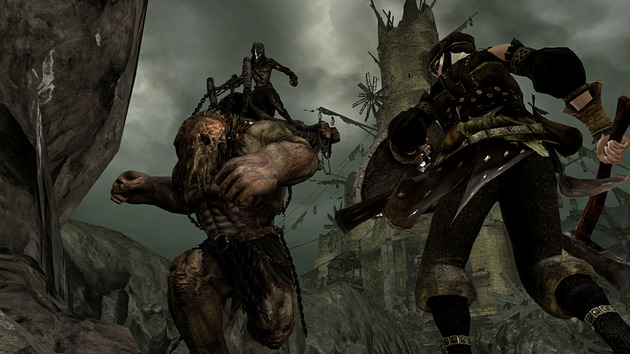
From time to time, you'll notice bloodstains on the floor — these are another manifestation of Dark Souls II's online component. These stains represent the last few seconds of another player's life, so you can often use them to spot upcoming hazards. You may also catch glimpses of the spectral outlines of other players going about their business or relaxing near a bonfire — you can't interact with these individuals, but they do at least make you feel part of a wider, living world.
You begin the game in human form with your life bar at full capacity. Dying once transforms you into an undead — also known as 'Hollow' — and knocks a small amount off your health bar's total size. This bar continues to drop every time that you die in Hollow form until it reaches 50 per cent of its size. This means that you're facing the game at a massive disadvantage, especially when it comes to tricky boss fights.
Thankfully, by using the Human Effigy item, you can restore your humanity as well as your health bar. However, don't use these items too readily; they're hard to come by and should be saved for moments when you're in dire need. It's also worth grabbing the Ring of Binding, which is located in Heide's Tower of Flame (in a chest just before you reach Cathedral of Blue) as it raises that 50 per cent figure to a more manageable 75 per cent.
One of the new mechanics in Dark Souls II involves the use of torches to light fires throughout the game. This has two benefits; the first is fairly obvious — torches light your path in dark areas. However, there's another bonus in that certain enemies are scared witless of fire, allowing you to take them down without any resistance. Torches don't last forever, though — once the time runs down the flame will go out. However, each torch that you collect boosts the amount of time that it lasts for, and you can relight an extinguished torch at any bonfire or previously-lit brazier.
This is another new feature of Dark Souls II. In the original Dark Souls, enemies would respawn every time that you reset the world by visiting a bonfire. This was annoying in one way, because you would find yourself fighting the same enemies over and over and over. However, it also meant that there was an endless supply of souls to harvest, which naturally helped when it came to grinding your character to a higher level.
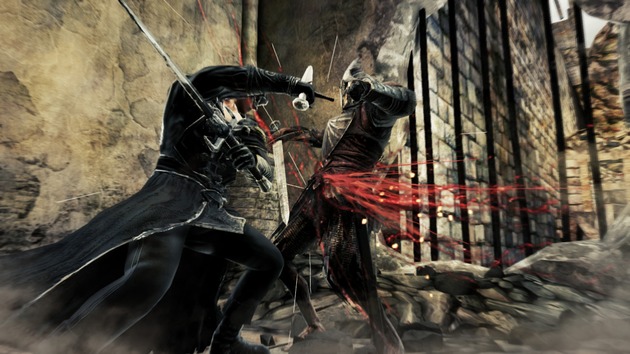
In Dark Souls II, enemies will only respawn a certain number of times before they vanish. It's very much a double-edged sword; while it means that eventually those pesky foes will be removed and make travelling easier, it also means that you have a finite amount of souls to collect, which makes boosting your stats harder. You can use the Bonfire Ascetic item to reset the respawn counter of a certain area if you wish, but this also makes all of the enemies in that area tougher. The tradeoff is that all items in the area are reset too, so you can potentially gain more dropped souls and cool gear.
Titanite — along with other special ores — is used to upgrade your gear at the blacksmith in Majula, and this process can have a dramatic effect on your game. Such Ores aren't in bountiful supply so you don't want to upgrade any old blade or suit of armour, but some weapons can be made especially potent with a few Titanite upgrades. If you find a weapon that suits your play style and want to keep it for the duration of the game, then augmenting it with some Titanite can drastically increase its power.
Well you shouldn't be. While many action games reward the bold and fearless, Dark Souls II has a nasty habit of humbling players that are too big for their boots. Even the lowliest foe is capable of dispatching your character if given the chance, no matter how powerful or well equipped you happen to be. With that in mind, you should always weigh up the risks and rewards of any potential confrontation.
If you've got loads of souls in reserve and your Estus Flask is empty, then you'll want to sidestep any enemies that lie between you and the next bonfire. Unless you're supremely confidence of victory, then it's simply not worth putting all of that progress at risk.
Subscribe to Push Square on YouTube
Hopefully this guide will prove useful to those who've never played a Souls game before. Has it helped you overcome your fear? Let us know with a comment below, and also feel free to share your own personal hints and tips to assist newcomers.
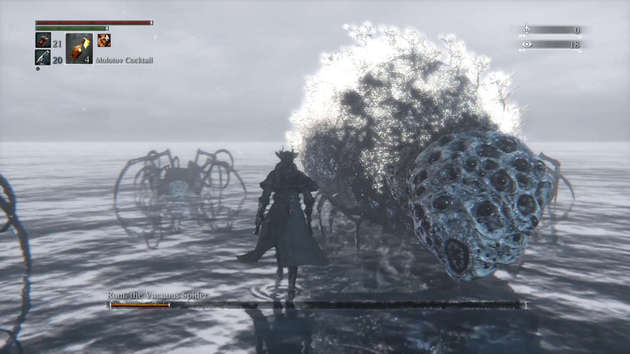
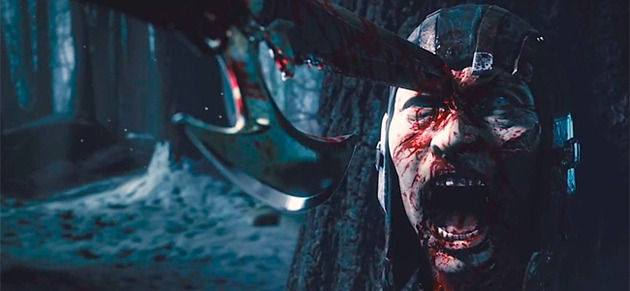


 Guide: Eight London Liberating Tips for Assassins Creed Syndicate on PS4
Guide: Eight London Liberating Tips for Assassins Creed Syndicate on PS4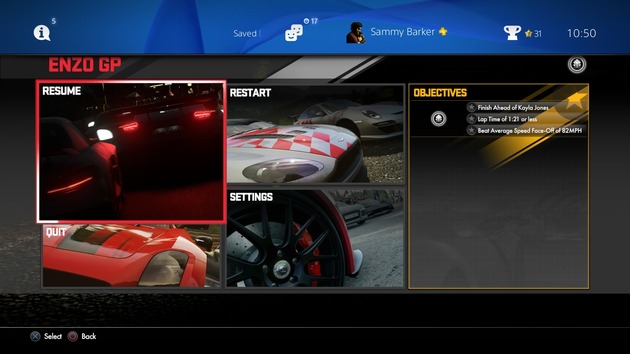 Guide: How to Use Suspend and Resume on PS4
Guide: How to Use Suspend and Resume on PS4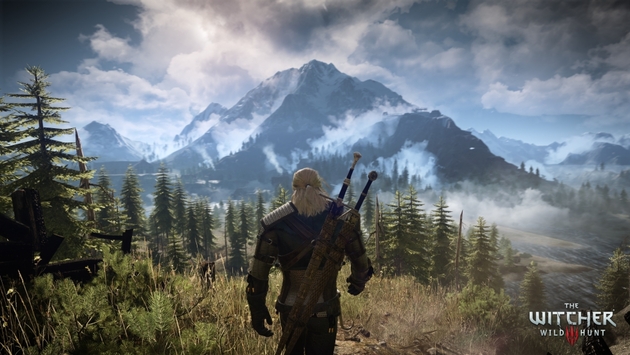 Guide: Where to Find All Places of Power in The Witcher 3 on PS4
Guide: Where to Find All Places of Power in The Witcher 3 on PS4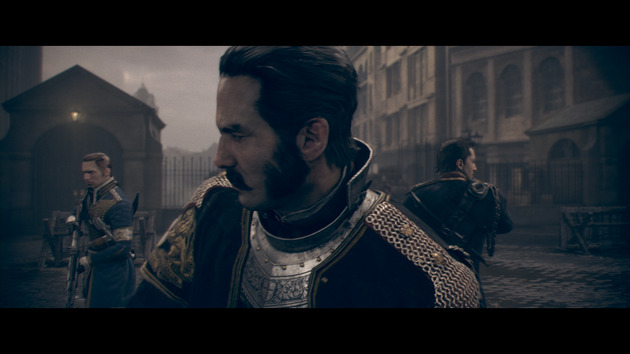 Guide: The Order: 1886 PS4 Trophy Guide & Road Map
Guide: The Order: 1886 PS4 Trophy Guide & Road Map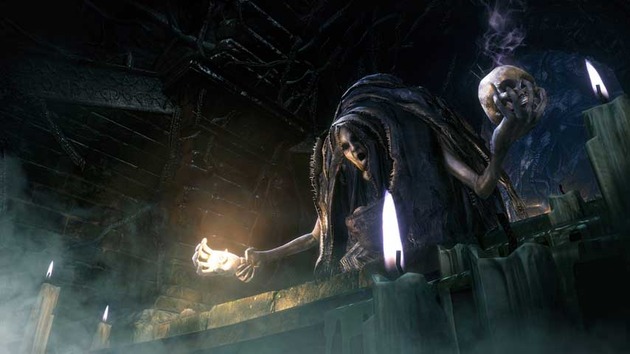 Guide: How to End Mergos Wet Nurse in Bloodborne on PS4
Guide: How to End Mergos Wet Nurse in Bloodborne on PS4